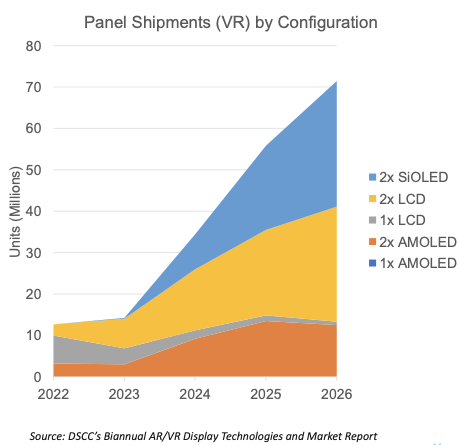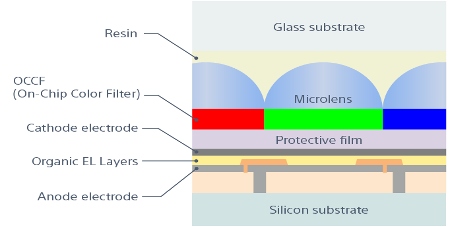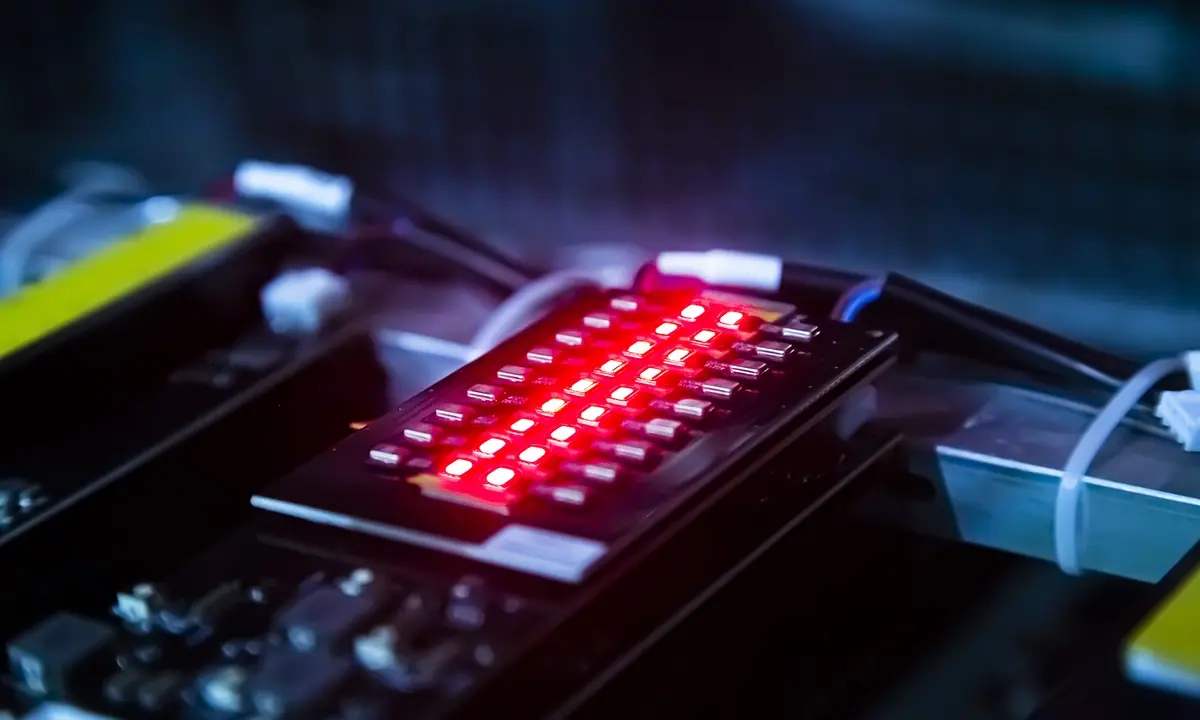There is a lot of interest in the AR (Augmented Reality)/VR (Virtual Reality) market due to the recent focus on Metaverse by industry leaders such as Meta and others. Apple started the new era of spatial computing by introducing Vision Pro. AR/VR is considered by some to be the next generation of 3D digital interactive information technology platform. So far, market reality has not matched high expectations. As noted in IDCs September press release, global shipments of AR/VR headsets declined for the fourth consecutive quarter as volume fell 44.6% year over year in Q2 2023. Several challenges must be solved to increase demand and increase adoption. Rates Innovation in display technologies is essential for AR/VR product development and market growth.
Higher growth forecast
According to a presentation by Guillaume Chansins (Director of Display Research, DSCC) at DSCCs AR/VR Display Forum in September, the AR/VR headset market is expected to have a stronger growth rate in the next 5 years from 2024. 2024 is expected to see significant growth thanks to new Qualcomm Snapdragon XR2 Gen 2 powered headsets. IDC also predicts that sales of AR/VR headsets will pick up again in 2024, growing 46.8% annually due to new hardware introduced by Meta and ByteDance. Apples Vision Pro and the growing presence of smaller companies. DSCC expects low-volume units (300,000 units) for the Vision Pro with a price tag of $3,499 and additional costs for users who require vision-correcting optical inserts (designed by Zeiss). Meta is expected to release the Quest 3 by the end of this year, and Samsung could be re-entering the market after a long absence.
AR/VR display shipments will be larger than headsets with the trend of using multiple displays in products. Most devices will have two displays (one in each eye). DSCC predicts that AR/VR display shipments will reach 124 million units in 2028. As Guillaume pointed out in the forum, AR/VR isn’t going to replace the phone, it’s going to be used as a second screen (like today’s tablets). DSCC expects VR (including passable AR) to dominate the consumer space. AR will be more spectacular for professionals.
Battle of multiple display technologies
Display requirements are different for VR (and AR see-through) and AR see-through.
VR (and passing through AR):
- It is mostly based on TFT LCD and AMOLED
- MicroOLED is introduced
- It needs high pixel density to reduce screen door effect
- It requires high refresh rate and short duty cycle to reduce motion sickness
- You need lighter headsets
To view AR:
- All headsets: micro displays (DLP, Micro-LCD, LCoS, MicroOLED) or laser beam scanner (LBS).
- Micro LED entered the market
- Need for high resolution, very high brightness screen, glass-like design, small size (thinner and lighter) and energy efficiency
- The basic configuration consists of a display unit, zoom optics and a combiner
In AR/VR, system resolution can be measured in PPD (pixels per degree). If the PPD is not high enough, a screen door effect occurs. To overcome that, many companies have started using high-resolution micro-displays. VR systems are starting to use MicroOLED to reduce form factors and reduce the screen door effect.
DSCC predicts that OLED on silicon will account for the largest share of shipments for the VR display market with LCD in second place in the next few years. AMOLED will lose its share due to the limitation in pixel density. MicroLED with higher potential for brightness has an advantage for clear AR but less important for VR.

MicroOLED: Ready to Dominate for VR and AR See-Through Displays
The use of micro OLED (MicroOLED) displays in VR/MR (Mixed Reality) displays is especially now started by Apple Vision Pro. It can be used for both VR and AR. This can help reduce the effects of the door form and screen. MicroOLED displays can be broadly categorized into RGB OLED and white OLED (WOLED). However, high-resolution micro OLED RGB displays still face challenges due to shadowing effects during the FMM (Fine Metal Mask) deposition process. White OLED uses a color filter to produce an image that can achieve a high PPI (4000PPI). However, the color filter absorbs a very high percentage of the emitted light, which limits the maximum brightness for the MicroOLED. Sony has used a microlens to increase the maximum brightness of the micro OLED displays. Kopin has developed a triple stack architecture to increase brightness. eMagin has achieved 10,000 nits of brightness in a WUXGA 4K micro-OLED display built by directly patterning (removing the color filter) the red, green and blue (RGB) sub-pixel emitters on the backplane. Samsung has acquired eMagin Display.
For MicroOLED, higher PPD, high luminance (to eliminate motion artifacts), high resolution (to eliminate screen door effects), high fill factor, higher efficiency, and longer lifetime capabilities lead to increased demand for VR. AR vision requires very high brightness, very high resolution and very high contrast. These requirements make micro OLED displays more useful for both AR and VR.
- SiOLED (OLED oS) MicroOLED has higher efficiency, longer lifetime and increased contribution
- Apple announced Apple Vision Pro: 2 OLEDOS (Micro-display SiOLED) from Sony + 1 AMOLED for $3499, expected in early 2024.
- Sony’s 1.3 Micro OLED (Using Microlens), 4K MicroOLED Display for VR, 4032PPI
- LGD has revealed a 0.42-inch OLEDOS (OLED on silicon) display for AR, 3500PPI.
- BOE showcased 1.3-inch 4K4K Micro OLED VR display, >4000PPI
- Samsung Display has launched a pilot MicroOLED line for mass production in 2024 and acquired eMagin.

MicroLED: Emerging presence with AR display
MicroLEDs’ very high brightness, high reliability (inorganic LED display) and the ability to create ultra-compact form factors with low power consumption will have major advantages for the obvious AR market. It is required to develop high efficiency MicroLED with submicron chip size on a single substrate. At the same time, as the chip size shrinks, the efficiency of MicroLEDs decreases. Research conducted by Samsung Display has shown that the problem of reduced size-dependent external quantum efficiency (EQE) can be solved by minimizing surface defects using a suitable sidewall structure and passivation method, as described in the enlightening paper on VR displays and Advanced AR on the information screen is indicated, reduced. Magazine (March/April 2023) by the Samsung Display team. According to the paper, several research groups and companies are developing cross-sectional RGB and stacked vertical RGB to implement RGB on a wafer, but the technology is not mature enough to be used in mass production. In the first step, three RGB panels will be commercialized using the optical combination, and in the next step, AR products are expected to be developed using the integrated RGB panel. Recent full-color microLED demos have been shown by Jade Bird Display (JBD), Porotech, PlayNitride, and others.
According to a presentation by Nikhil Balaam, CEO of Mojo at the DSCCs AR/VR forum, there is a need for efficient submicron RGB MicroLEDs on a single substrate. For production, it requires a mature ecosystem and cost-effective scalable process. Mojo has developed a color display using high-performance quantum dots (HPQDs) with submicron-efficient blue and green microLEDs and high-efficiency red and green QD inks. They use a 300mm Gallium Nitride on silicon manufacturing process.
The QDCC process simplifies micro-LED fabrication and improves the mass transfer efficiency of standard R/G/B LED chips, because only blue chips are needed. Driving electronics are simplified because only blue chips are used. The red QD-MicroLED is much more efficient than the intrinsic red MicroLED, especially at small pixel sizes.
Jade Bird Display (JBD) announced in October that the brightness of its 0.13-inch red MicroLED chip exceeded 1 million nits. The red pixel pitch of MicroLED JBD is only 4 mm, while the emitter size is even less than 2 mm, which is a high challenge in performance. Combined with excellent passivation with new materials and processes, the final design further breaks the size effect barrier and significantly increases the internal quantum efficiency. The red lighting landmark takes the X-cube JBDs Hummingbird polychrome projector to a new level. JBD will market its mass-produced Hummingbird optical engines to boost the consumer AR glass market. Hummingbird polychrome projector has three 0.13 micro LED displays. MicroLEDs move toward commercialization:
- Applied materials:
- CD-free UV-A and RGB QD microLEDs, high EQE, high efficiency, simple mass transfer, pixel repair scheme with 4 subpixels, improve production efficiency and reduce production cost
- PlayNitride:
- For AR/MR, -PixeLED, a single device 0.49 inch FHD full color micro LED micro display, ultra high 4536ppi, more than 150000nits
- Purotech:
- 0.26, 1280×720 MicroLED single panel for full color for AR
- JBD:
- 0.13 MicroLED Integrated Display for AR, VGA, with Polychrome Projector (in production)
- NS Nanotech:
- Nano-LED micro display for ARVR, high-efficiency, multi-color light sources at the sub-micron scale, are integrated seamlessly on a single chip.
LCD: Strong presence in VR display with MiniLED
LCD is leading the VR market with technological advancements such as high PPI. Companies are now using advanced LTPO (LTPS+Oxide backplane) to produce displays with the higher aperture ratio necessary for VR. The use of local light reduction technology achieves higher contrast and lower energy consumption. The integration of MiniLED backlighting has helped to increase LCD performance in terms of response time, contrast, brightness and lifespan. LCDs are also more affordable.
For the AR/VR market, each display technology has its own advantages and challenges. Innovations in display technology, especially for Micro OLED and MicroLED, are essential to the growth of the AR/VR market.
Sweta Dash is the Founder President of Dash-Insights, a market research and consulting firm specializing in the display industry. Call for more information [email protected] or visit www.dash-insights.com
#MicroOLED #MicroLED #future #ARVR #displays
Image Source : displaydaily.com

